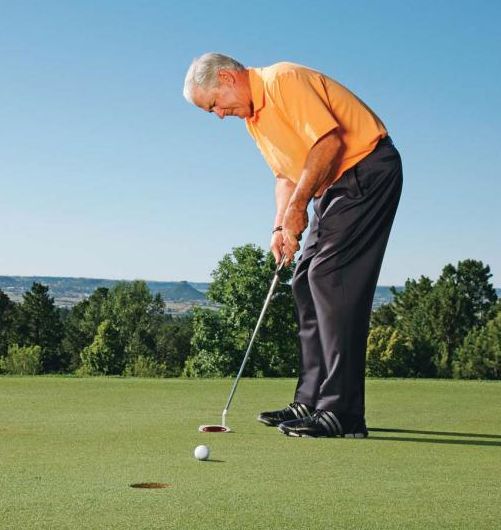February 23, 2022
What Kind of Putter are You?
 There are basically three types of putting styles. The first is the putt that dies at the cup, which I call the Ben Crenshaw style. The second, that most good putters utilize, is a putt that travels at a good rate of speed that would go between 12 inches to 18 inches past the cup, if it did not go in the hole. The last is the Arnold Palmer approach, which is a very aggressive putt that might go as far as three feet past the cup.
There are basically three types of putting styles. The first is the putt that dies at the cup, which I call the Ben Crenshaw style. The second, that most good putters utilize, is a putt that travels at a good rate of speed that would go between 12 inches to 18 inches past the cup, if it did not go in the hole. The last is the Arnold Palmer approach, which is a very aggressive putt that might go as far as three feet past the cup.
When doing a putting and green reading lesson, I will pick out a ten to fifteen foot putt that is on a noticeable slope. I will then ask the student what they see and I might get an answer that they think it has a four inch break from right to left. What they left out was the all-important "at what speed?" A Crenshaw putt might break eight inches, while a slightly harder putt might break the four inches, but a Palmer putt might only be one inch outside the cup. Speed determines the break.
Ben Crenshaw was recognized as one of the best putters during his career. He had great touch and relied on getting the exact distance and dying his putts in the hole. Remember also, he is putting on near perfect PGA Tournament greens each week, so his putting surface was as close to a pool surface in consistency. The average green, either on a public course or private course is usually not that level or consistent. Using the Crenshaw method will improve consistency and lessen three putts, but will not improve lower your putts per round.
Before explaining the preferred method of putting, let me touch on the Palmer style. In his prime, Arnold was very aggressive with his style of play. There wasn't a pin that he didn't like and go for with his irons. He won with his aggressive play, but at times his strategy backfired. It was part of why people loved him so. They loved his "go for it all" or "lose everything" approach. Fortunately, he had the game to back up his charging style of play, which made him one of the greats ever. In putting, he rammed his putts, taking out the break and slamming the ball in the back of the cup. In his prime, he was a great putter, but later in his career the greens became faster and his style didn't work as well. His missed charging putts went further past the hole and suddenly he started to miss the putts coming back. There are times when his approach is warranted, like on slow greens or steep uphill putts. Otherwise, I would adopt the next approach.
I would call this style the Dave Pelz or the Dave Stockton approach. Dave Pelz was a NASA scientist, who is now widely respected as a putting and short game guru. He studied and experimented to determine the ideal speed that ball should be traveling to have the best chance to stay on line and go in the hole. After exhaustive research, he determined a universal 17 inches past the cup was the ideal speed. Dave Stockton, who I consider to be the best putter that I've ever played with or seen, talks about a 12 to 18 inch area past the cup that most players should consider as a correct speed.
The last 25% of your putt will be where there will be the most break and where the grass or ground will most affect the direction of your putt. Putting surfaces are not perfect. Grasses are at different heights, there are ridges and bumps. Also every player in each group will walk up to the cup on every hole and retrieve their golf ball. Each step will have some impact on the green, whether you see it or not, your shoes and your weight either being from 100 to 250 lbs. has left an imprint. Your golf ball has to traverse those bumps as it navigates its way to the hole. That is why it is important to have enough speed to your putt to offset those obstacles.
My caddy in Scotland had a saying when someone came up short on a putt. "Laddie, the hole won't come to you." Good advice! Be aggressive; get the ball traveling at a speed that would go past the cup. Because, as Yogi Berra once said, "Most putts that come up short don't go in."



